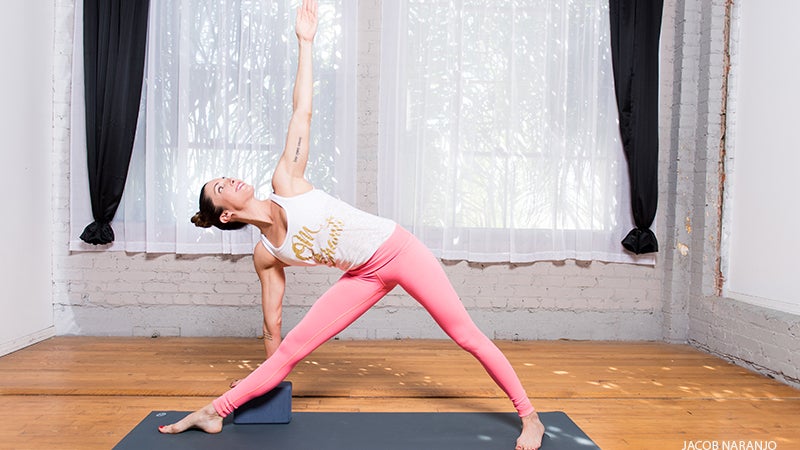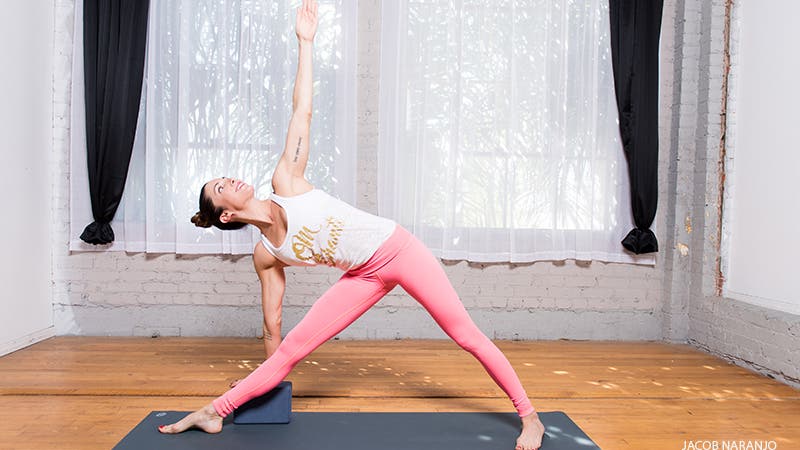Strengthen Your Lower Back with Yoga, Avoid Sports Injuries


Building strength in the lower back can enhance your performance in daily activities and help you avoid sports injuries.
Janet Wong’s Ultimate Frisbee career was compromised seven years ago, when a car accident left her with severe back pain that months of medical interventions and physical therapy could not resolve. Doctors told Wong, a three-time winner of the World Flying Disc Federation World Overall Championships, that they had run out of options and that she might have to endure back pain for the rest of her life. She was 27 at the time.
Instead, Wong turned to yoga, which she had discovered a year and a half earlier. She hoped that patience, a positive outlook, and regular asana practice would eventually help her return to the sport she loved. It took more than a year, but Wong’s patience and determination paid off. Her back pain subsided, and she could again play Ultimate on an elite level without constant discomfort. “I feel like yoga really helped me rehabilitate and enabled me to play my sport,” says Wong, now a certified yoga teacher in the San Francisco Bay Area.
See alsoAsk the Expert: Which Yoga Poses Prevent Lower-Back Pain
Specifically, her yoga practice helped her build a strong yet supple back and healthy abdominal muscles. “The lower back is part of the core of the body, and the core is our power center,” Wong says. “If the is strong and powerful, then an athlete—or any fitness-minded person—will be able to consistently and accurately produce movement like running, twisting, and jumping without getting hurt.”Specifically, her yoga practice helped her build a strong yet supple back and healthy abdominal muscles. “The lower back is part of the core of the body, and the core is our power center,” Wong says. “If the core is strong and powerful, then an athlete—or any fitness-minded person—will be able to consistently and accurately produce movement like running, twisting, and jumping without getting hurt.”
The lower back is a fulcrum for the rest of the body, acting as the hinge that connects the upper and lower body. The muscles, vertebrae, disks, and ligaments in the lower back can twist and bend forward, backward, and from side to side. Because of this wide range of motion, the area absorbs a lot of stress during everyday movement. “It’s the hot spot where all forces are focused,” says B. Scott Brown, M.D., chief of rehabilitation medicine at Sinai Hospital in Baltimore.
The lower back muscles function like shock absorbers. When you run, jump, or fall, they prevent the shock from moving to the spine’s vertebrae, disks, and ligaments. These parts are not designed to take much strain, which is why over time they become prone to ruptures and tears.
See alsoPranayama to Prevent Injury in Teen Athletes?
Strong lower back muscles also support the spine by keeping its natural curves in place. These curves help distribute forces evenly and provide stability during motion; when they become exaggerated due to weak muscles not holding them in place, pain tends to pop up—not only in the lower back but in other parts of the body as well. Strong lower back muscles, along with strong abdominals, also help lengthen the spaces between the spine’s bones and disks, preventing them from grinding against one another as you move.
So how do you stretch and strengthen these muscles? Trikonasana (Triangle Pose), Dandasana (Staff Pose), and forward bends are particularly good, because they work the muscles of the abdomen and along the sides of the torso in addition to those of the lower back. “This creates a natural girdle that protects us from injuries,” Wong says.
In addition, Trikonasana also strengthens an important back muscle called the quadratus lumborum, which connects the hip to the rib cage and allows you to bend sideways. It also helps one side of the pelvis lift higher than the other. You use it repeatedly during any activity in which you shift your body weight from side to side. To also lengthen your quadratus muscle in Trikonasana, Wong suggests using the wall as a prop.
See also10-Minute Sequence to Ease Back Pain
Poses such as Dandasana and forward bends help stretch not only the back muscles but also the hamstrings (along the backs of the thighs), helping relieve tension in the lower back. They also teach you to extend through the torso and tip the top of the pelvis forward, so the back can move through its normal range of motion. This is important for the lower back muscles to function optimally. “There’s a relationship between the length of a muscle and the strength that it generates,” Brown says. “If a muscle cannot move along its normal full range of motion, it can’t generate the optimal power.”
Balance and coordination can’t be overlooked, either, because they help you react to certain situations—say, jumping and twisting to catch a Frisbee—with precision and grace, preventing injury to your lower back muscles. Ardha Chandrasana (Half Moon Pose) can help build both these skills by training the nerves throughout the body to tell the brain where the body is in space and time.
See alsoEveryday Yoga for Athletes: 9 Post-Workout Poses to Balance Core Strength
About our pro
Alisa Bauman is a writer and yoga instructor.